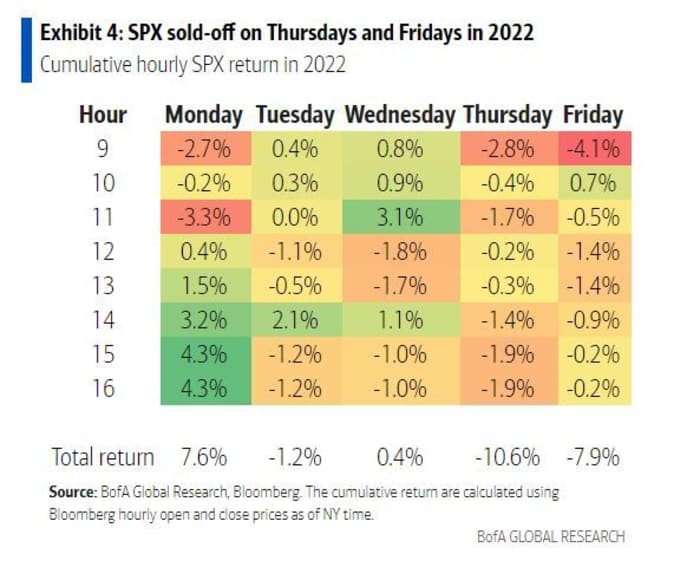Brace For More Market Pain: Investors' Optimism Vs. Reality

Table of Contents
Inflationary Pressures Persist
Ongoing inflationary pressures are significantly impacting market stability. The combination of increased demand and constrained supply is fueling price increases across various sectors, creating a challenging environment for businesses and consumers alike. This sustained inflation contributes to market volatility and increases the risk of an economic downturn, even potentially stagflation.
- Persistent supply chain disruptions: The lingering effects of the pandemic, coupled with geopolitical events, continue to disrupt global supply chains, leading to shortages and higher prices for goods.
- Rising energy costs: Soaring energy prices, driven by geopolitical instability and increased demand, are a major driver of inflation, impacting both production costs and consumer spending.
- Increased demand exceeding supply: Strong consumer demand in the face of limited supply is exacerbating inflationary pressures, pushing prices higher.
- Central bank responses and their limitations: While central banks are raising interest rates to combat inflation, these actions also risk slowing economic growth and potentially triggering a recession. The effectiveness of these measures in curbing inflation without causing significant economic pain remains uncertain.
Geopolitical Instability Fuels Uncertainty
Ongoing geopolitical conflicts are injecting significant uncertainty into the market. These conflicts disrupt global trade, impact energy supplies, and fuel inflation, all contributing to a volatile and unpredictable investment landscape. The resulting geopolitical risk is a significant factor that investors must carefully consider.
- The Russia-Ukraine war and its global impact: The war has severely disrupted energy markets, increased food prices, and created significant uncertainty about future economic growth.
- Rising tensions in other regions: Geopolitical tensions in various regions around the world add to the overall uncertainty and increase the risk of further disruptions to global trade and supply chains.
- Energy security concerns: The war in Ukraine has highlighted the vulnerability of many countries to energy supply disruptions, leading to increased energy prices and heightened uncertainty.
- Impact on global supply chains and commodity prices: Geopolitical instability frequently disrupts global supply chains, leading to shortages and higher prices for various commodities.
Interest Rate Hikes and Their Consequences
Rising interest rates, implemented by central banks to combat inflation, have significant consequences for various market sectors. While intended to curb inflation, these rate hikes increase borrowing costs, impacting businesses and consumers. This can lead to a slowdown in economic activity and potentially a recession.
- Impact on borrowing costs for businesses and consumers: Higher interest rates make it more expensive for businesses to borrow money for investments and expansion, and for consumers to borrow for mortgages, cars, and other purchases.
- Effect on corporate earnings and investment: Increased borrowing costs can reduce corporate profitability and lead to reduced investment, impacting economic growth.
- Potential for a recession: Aggressive interest rate hikes risk triggering a recession by significantly slowing economic activity.
- The role of central banks in managing inflation: Central banks are walking a tightrope, trying to control inflation without causing a severe economic downturn. The success of this delicate balancing act is far from guaranteed.
Investor Sentiment vs. Fundamental Analysis
A significant gap exists between optimistic investor sentiment and the underlying economic realities. While some market sectors show signs of strength, a closer look reveals potential vulnerabilities. Overconfidence based on recent market performance may mask the inherent risks.
- Examples of market sectors showing signs of weakness despite positive investor outlook: Certain sectors might appear strong on the surface, but a deeper fundamental analysis might reveal underlying weaknesses.
- Analysis of investor behavior and potential for overconfidence: Past market performance doesn’t guarantee future success. Overconfidence can lead to poor investment decisions.
- The importance of fundamental analysis in navigating market uncertainty: Thorough fundamental analysis is crucial for assessing the true value of assets and making informed investment choices, mitigating market pain.
Conclusion
While investor optimism persists in certain sectors, a thorough examination of inflationary pressures, geopolitical instability, and the consequences of interest rate hikes reveals a stark reality: the potential for further market pain remains significant. Ignoring these fundamental realities can lead to significant financial losses. Understanding the challenges ahead is crucial for navigating the complexities of the current market environment. Don't let misplaced optimism lead you astray. Prepare for potential market pain by conducting thorough due diligence and diversifying your portfolio. Learn more about mitigating market pain by researching robust investment strategies and consulting with a financial advisor.

Featured Posts
-
 Increased Rent In La Following Fires Is Price Gouging To Blame
Apr 22, 2025
Increased Rent In La Following Fires Is Price Gouging To Blame
Apr 22, 2025 -
 Robotics In Footwear The Hurdles To Automated Nike Production
Apr 22, 2025
Robotics In Footwear The Hurdles To Automated Nike Production
Apr 22, 2025 -
 127 Years Of Brewing History Ends Anchor Brewing Company To Close
Apr 22, 2025
127 Years Of Brewing History Ends Anchor Brewing Company To Close
Apr 22, 2025 -
 Unintended Consequences Examining The True Cost Of Trumps Economic Goals
Apr 22, 2025
Unintended Consequences Examining The True Cost Of Trumps Economic Goals
Apr 22, 2025 -
 Are High Stock Market Valuations A Concern Bof A Says No Heres Why
Apr 22, 2025
Are High Stock Market Valuations A Concern Bof A Says No Heres Why
Apr 22, 2025
